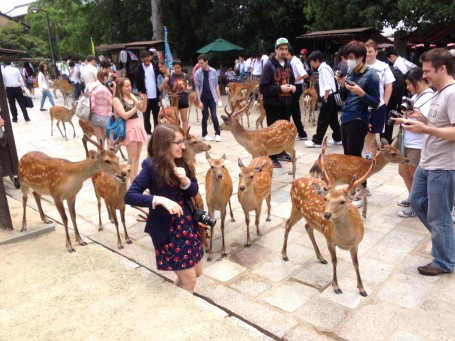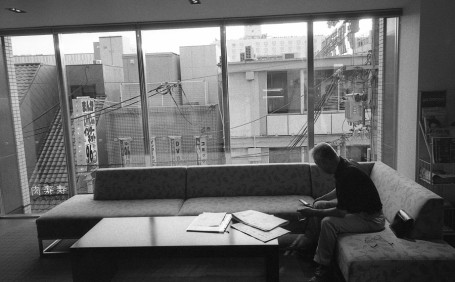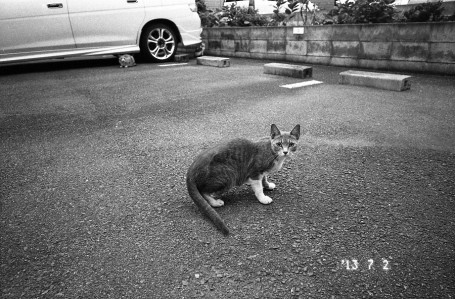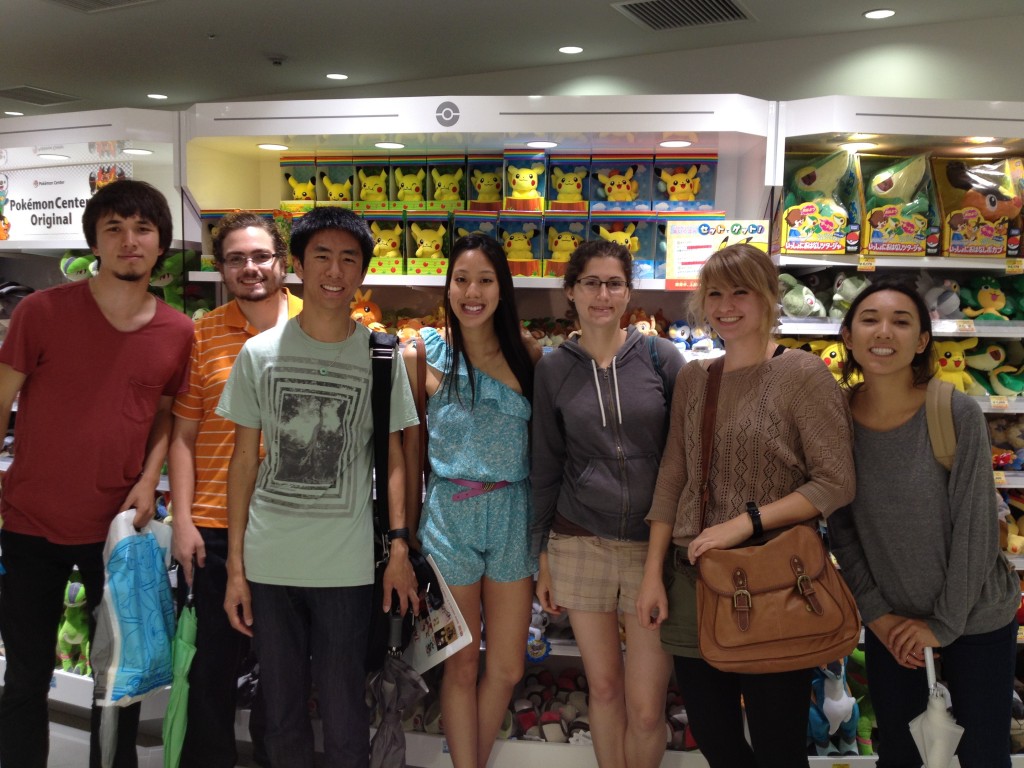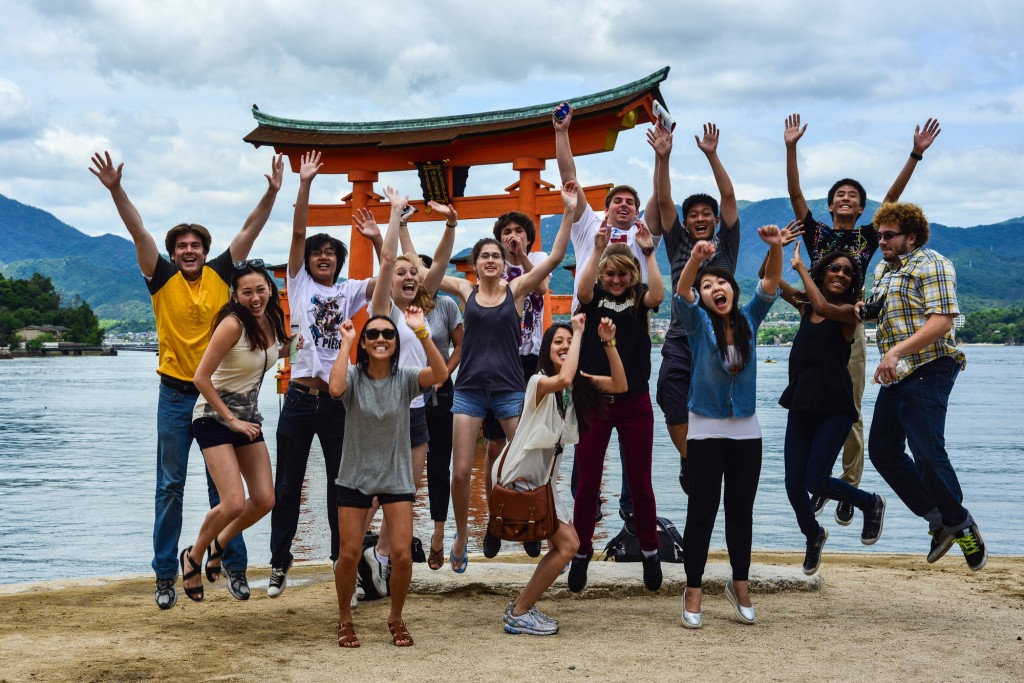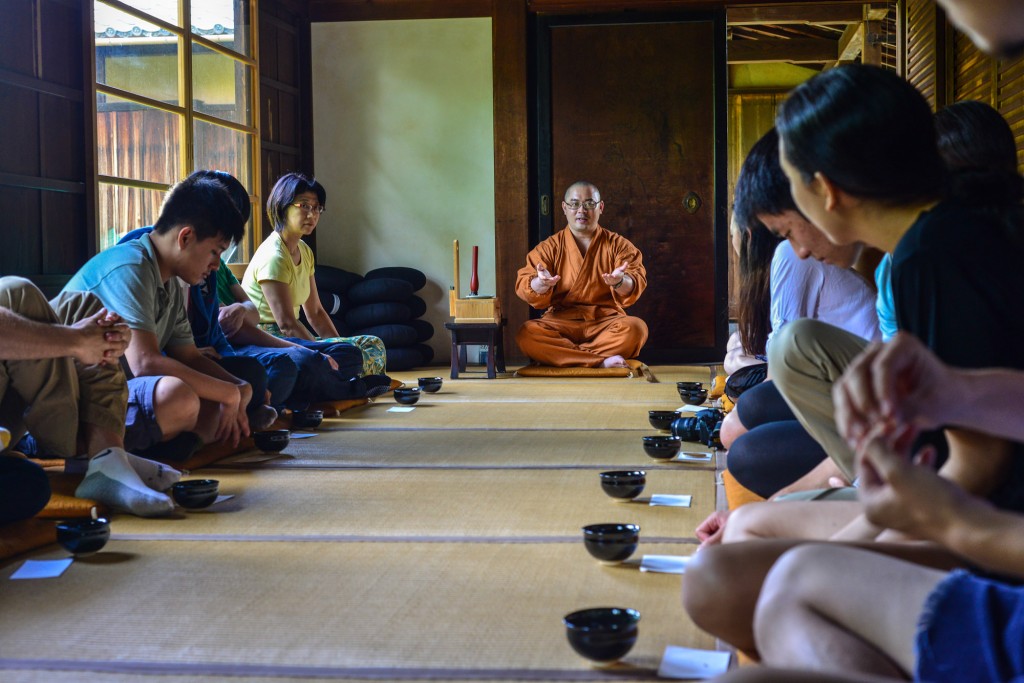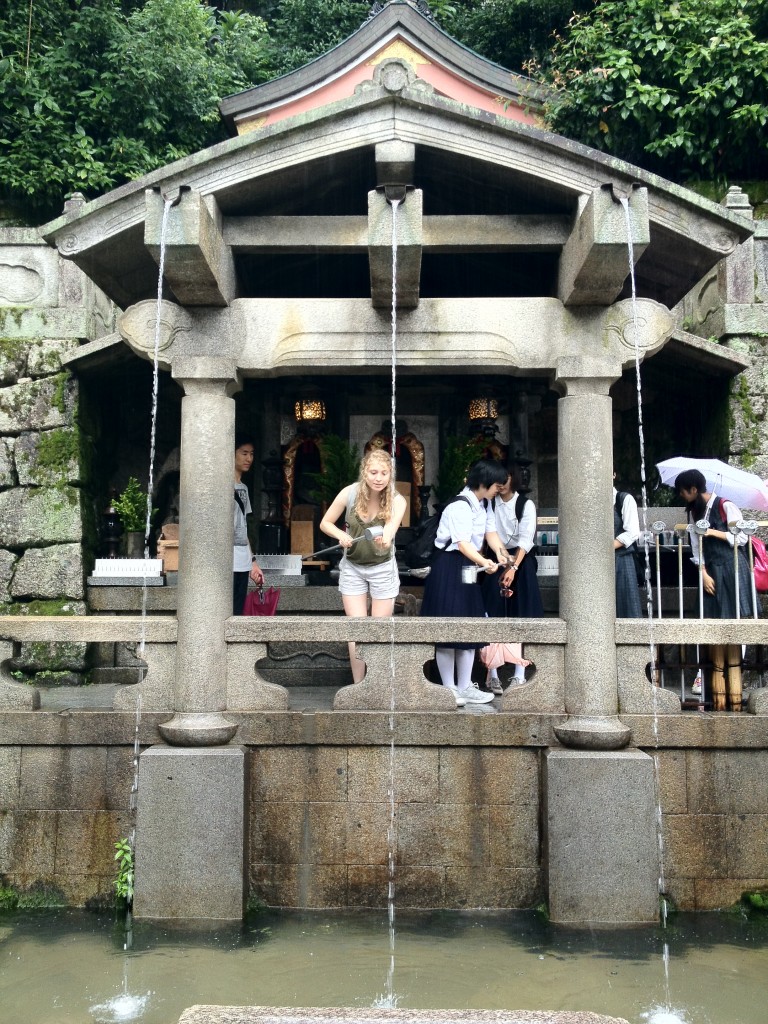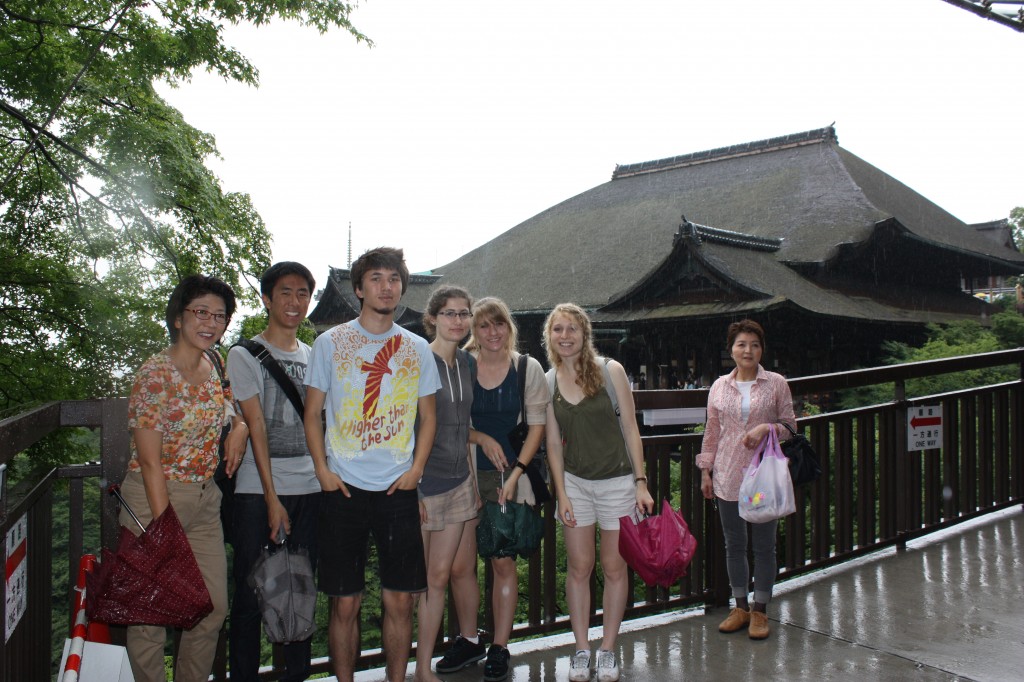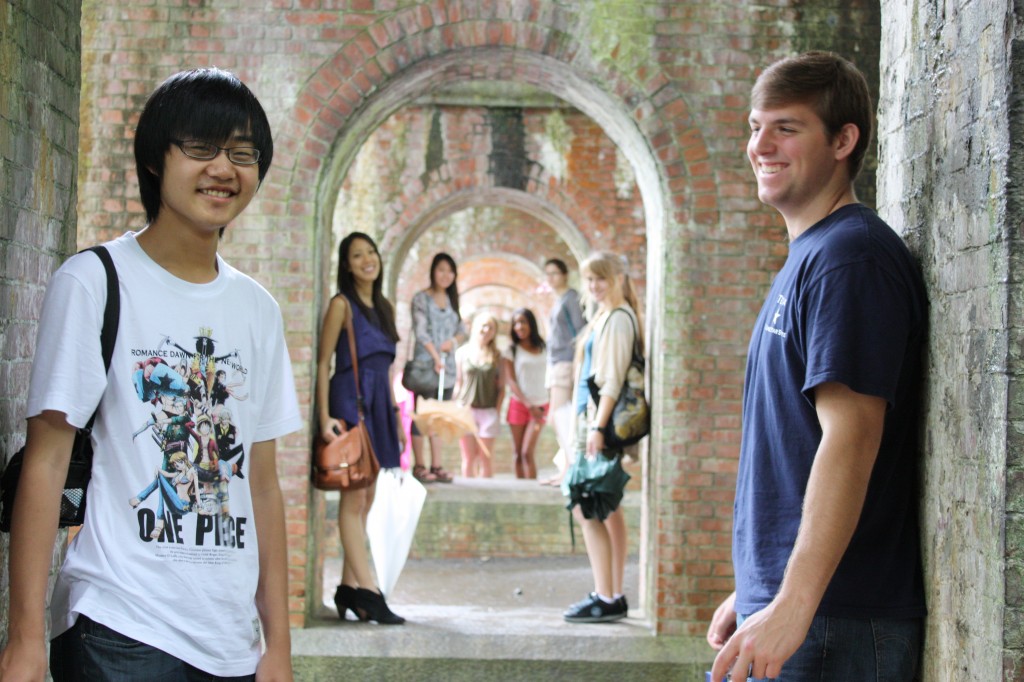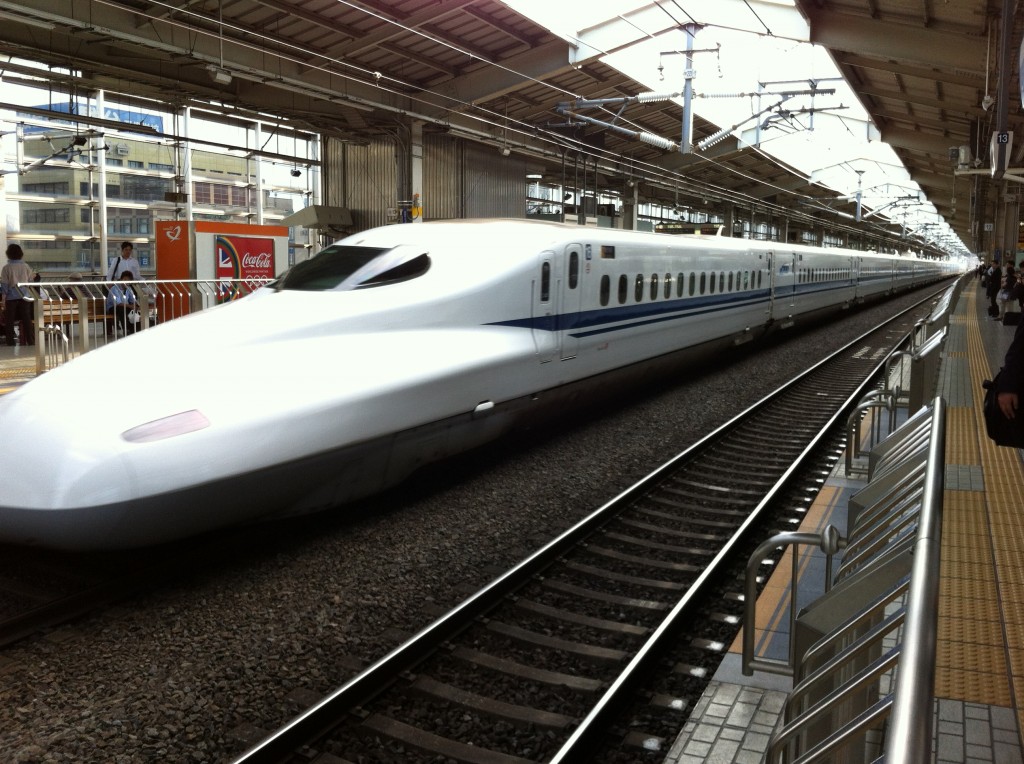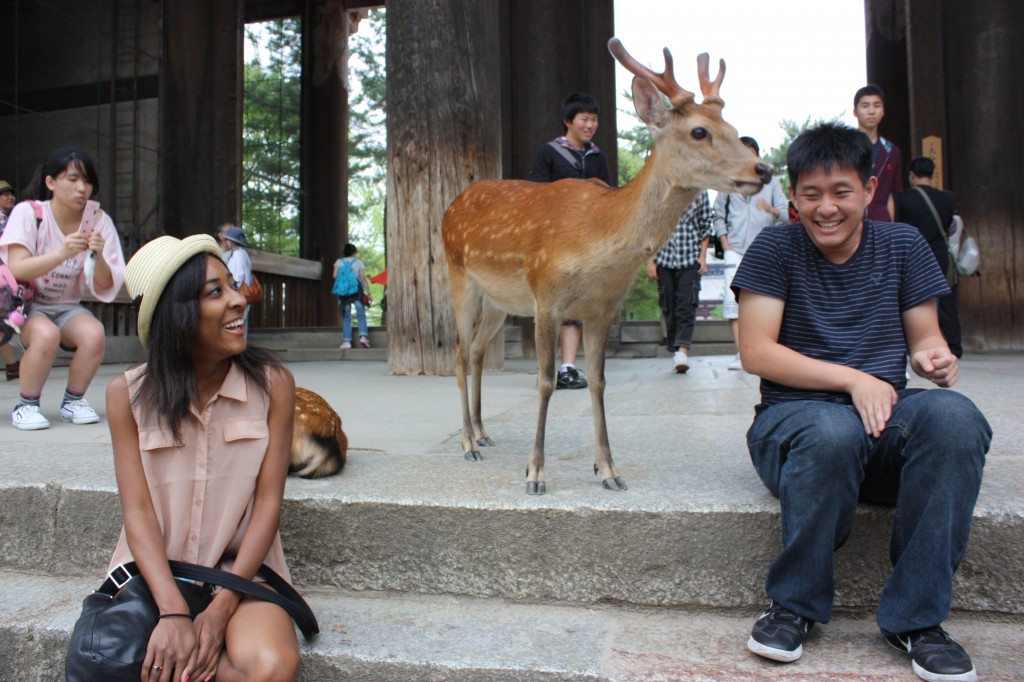By Evan Brown
This week we traveled west to the Kansai region and experienced a more traditional side of Japanese culture than the bustling life of the ultimate metropolis, Tokyo. The group departed for Kyoto early Monday morning, but David and I were already in Kansai having taken advantage of the seven-day rail pass in order to travel to Kobe and Osaka. Sally Kim visited a friend in Osaka, and John went back to Tohoku, where he had lived for a few months in high school.
We all converged at Kyoto Station at lunch time on Monday without much trouble, and everyone found food quickly before we boarded a bus to Nara. I was pleasantly surprised by the serious supply of my favorite convenience store food, Tuna Dog, at the Family Mart in Kyoto Station.
In Nara, there were a lot of deer in the area surrounding the temples we visited, and constantly being fed by humans had made them a little bit naughty. It was, for the most part, fun to feed and play with the deer, but their aggressive behavior was also somewhat disconcerting, as Olga soon found out.


